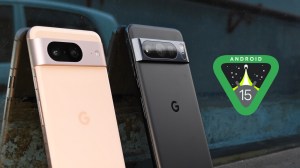- India
- International
Selfie and the simian
Why we can’t copyright what exists in nature.
By: Ananth Padmanabhan
A monkey and the selfie it took have ignited a debate on copyright law. David Slater, a wildlife photographer, was in Indonesia in 2011 when a macaque caught hold of his camera and took some photographs, including of itself. Later, Wikipedia included some of these images in its “public domain” or commons material, which is open to appropriation without payment of royalty. Wikipedia asserted that the selfies have no human “author” in whom copyright could be vested. Slater objected, contending that the copyright vested in him. Wikipedia countered this by holding that the monkey, and not Slater, owns the copyright.
It is one thing to contend that a particular work is part of the public domain and quite another to argue that the copyright belongs to someone else. The latter response assumes copyrightability while the former discounts it. Wikipedia should have stuck to the public domain strand of reasoning. This would have been not only a better justification but also a great service to the entire user community.
At the first of the three stages of every copyright infringement claim is the question of copyrightability of the work. Only if the work is copyrightable does one proceed to the second stage — resolving the complex issue of infringement, which is, in turn, based on assessing whether there is substantial similarity between the copyrighted work and the work accused of infringement. If infringement is made out, in the third stage, the defendant can still claim that her use of the copyrighted work falls within the “fair uses” permissible under the statute — for instance, for instructional and research purposes, or for the benefit of the blind.
Works that are in the public domain are not copyrightable at all. Generally, the public domain consists of ideas and certain limited forms of expression that are not copyrightable, and works that have run out of the term of copyright protection due to the efflux of time. Historically, the most controversial of these categories has been the third, especially in the United States. The copyright term in the US has been increased periodically and in a fashion uncannily coinciding with the expiry of Mickey Mouse’s copyright term. The downside of this approach, exemplified by the Sonny Bono Act, which was upheld by the US Supreme Court, has been the large-scale denial of free access to several works that would otherwise have fallen in or transitioned into the public domain. The rationale for this third category of public domain works is of special significance to the present debate. The utilitarian justification for copyright is premised on the conferment of a limited monopoly that rewards the creator without excessively curtailing public access. Hence, as soon as the term of copyright protection expires, the work must be free for all to use. The same rationale would hold even stronger for works that are found in nature, because such works require no such incentive for their creation in the first instance.

By basing its response on the non-human authorship of the photograph, the Wikimedia Foundation misses the woods for the trees. A parallel can easily be drawn between the selfie and the millions of notes and sounds produced by birds and animals, which may technically fit within the definition of “musical works”. Clearly, these are and have been free to use, reproduce and draw inspiration from. The reason for this is not that birds and animals are non-human. If that were the logic, music composed by a programmed robot would not be copyrightable, but the law doesn’t seem headed in that direction. The very existence of copyright law is interlinked with that of a public domain, which includes all works of nature that mankind can freely appropriate. The selfie is as much a work of nature, an outcome of natural, as opposed to creative, processes as the sounds produced by birds and animals.
It is important that one of the most contentious copyright controversies in recent times be decided on the public domain ground, which has taken a serious beating after the US Supreme Court upheld the Sonny Bono Act. The public domain is currently perceived as a toothless check on the abuse of copyright monopoly. If it had rooted for a public domain exception built on conceptual principles rather than statutory technicalities of ownership and authorship, Wikipedia would have done a great service to users.
The US Copyright Office has used this an opportunity to give the public domain doctrine a much-needed fillip. Late last month, it affirmed that works produced by nature, animals or plants would not be registered, thus responding to the problem using the language of copyrightability rather than a technical distinction between human and non-human authorship. In addition to the monkey selfie, the office lists mural paintings by an elephant and driftwood shaped and smoothed by the ocean as examples of non-copyrightable public domain material. This is hopefully the starting point of a rejuvenation of the currently toneless public domain doctrine.
Padmanabhan is author of ‘Intellectual Property Rights: Infringement and Remedies’
express@expressindia.com
40 Years Ago
EXPRESS OPINION
More Explained
Apr 16: Latest News
- 01
- 02
- 03
- 04
- 05









































